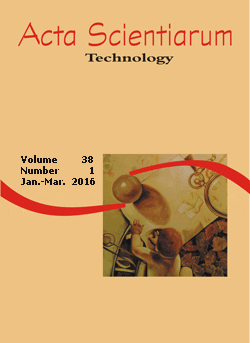<b>Production and spray drying of protein hydrolyzate obtained from tilapia processing by-products
DOI:
https://doi.org/10.4025/actascitechnol.v38i1.27639Keywords:
enzymatic hydrolysis, spray dryer, factorial designAbstract
In the last few decades, the offer of by-products obtained from the processing of tilapia (Oreochromis niloticus) has increased, and the need for developing products with high biological and nutritional values for use in animal nutrition motivated this study. Enzymatic hydrolysis of carcass, head and skin of tilapia was performed, as well as the separation of oil, residual solids and soluble proteins by centrifugation at high temperature and the spray drying of the protein fraction. Factorial designs were employed in the assays to evaluate the operating conditions of the spray dryer (inlet and outlet temperatures and flow rate) and the inclusion of drying aid agents (maltodextrin and calcium carbonate). The spray drying showed the best results with air inlet temperature of 190ºC, outlet temperature of 90ºC, flow rate of 30 L·h-1 including 10% maltodextrin (mass) in the liquid feed as a drying aid. The final powder recovery was higher than 90% and the physical, chemical and microbiological analyses met the Brazilian legal standards.
Â
Downloads
Downloads
Published
How to Cite
Issue
Section
License
DECLARATION OF ORIGINALITY AND COPYRIGHTS
I Declare that current article is original and has not been submitted for publication, in part or in whole, to any other national or international journal.
The copyrights belong exclusively to the authors. Published content is licensed under Creative Commons Attribution 4.0 (CC BY 4.0) guidelines, which allows sharing (copy and distribution of the material in any medium or format) and adaptation (remix, transform, and build upon the material) for any purpose, even commercially, under the terms of attribution.
Read this link for further information on how to use CC BY 4.0 properly.



















8.png)




